Get a sinking feeling every time you think about hopping on a sales call?
Recent stats from the world of sales paint a grim picture: 75% of buyers prefer a rep-free sales experience.
Let’s break that down.
For every 100 potential customers, 75 might be slipping right through your fingers (if you come across as a pushy salesperson during your pitch).
But here’s the thing:
You don’t have to settle for these dismal numbers.
Enter the consultative sales cycle.
This is about to flip your sales world upside down—in a good way.
I’m laying it out for you: the ins and outs, the whys and hows of consultative selling. All based on the strategies I’ve successfully honed over the years.
What is a Consultative Sales Cycle? (And How it Works)
Sales has always been about persuasion. But the methods of persuasion have changed A LOT over the years.
Remember those door-to-door salespeople who would try to convince people they need a shiny new vacuum cleaner?
Well, times have changed.
With new business models come new sales techniques and new ways to optimize your offers.
The consultative sales cycle is one such technique. It’s a method that focuses on understanding the client’s needs and crafting solutions tailor-made for them.
Consultative vs Transactional Selling
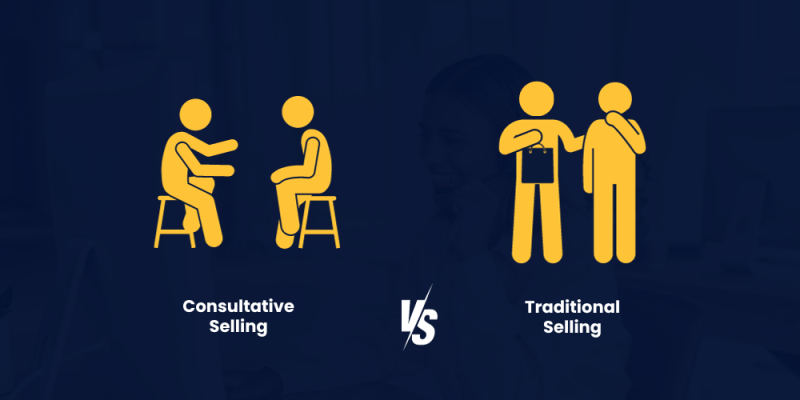
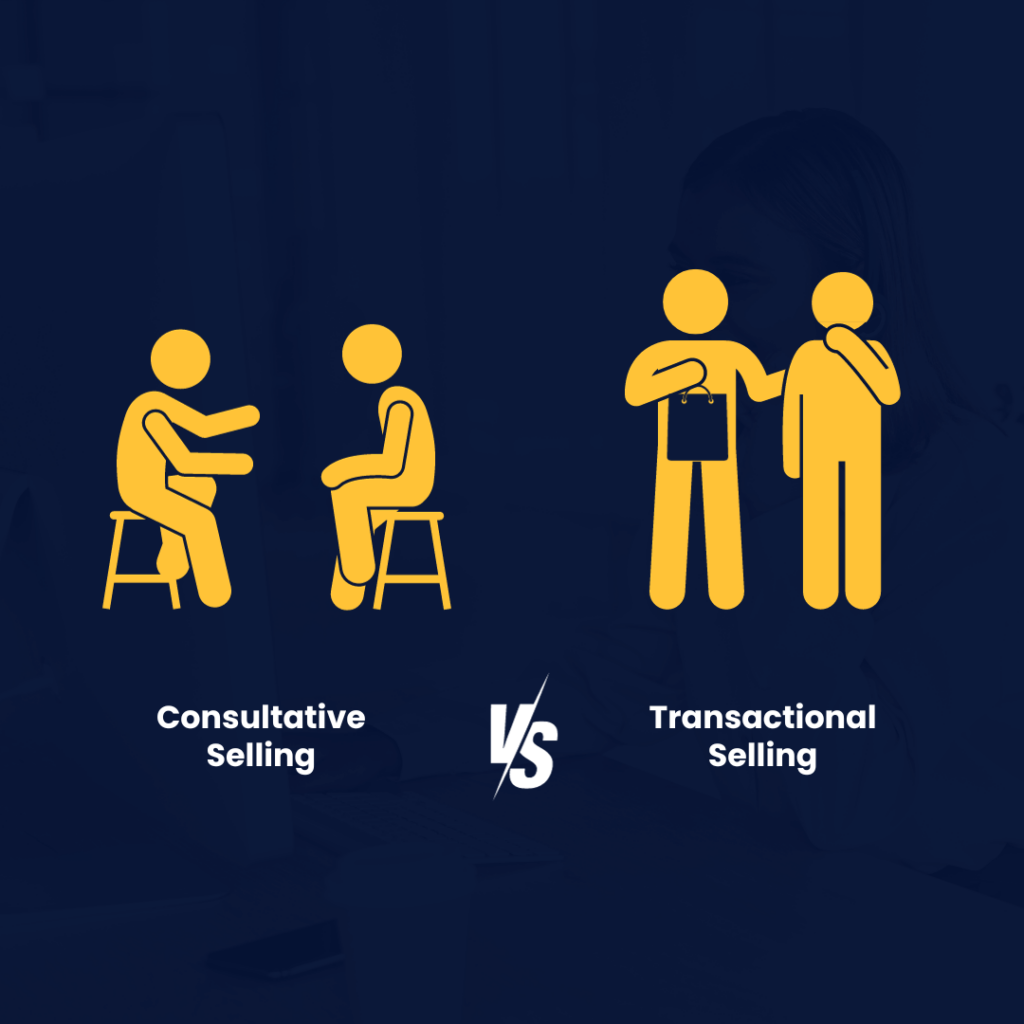
Think back to the last time you bought something from a store.
Did the salesperson:
- Point you to the product and hand it over?
- Engage in a conversation to ask about your specific needs?
The first scenario is transactional selling. It’s quick, often impersonal, and typically revolves around a single transaction.
If you want a product, you get the product. End of story.
The second scenario is consultative selling.
It works under the idea that every customer is unique. The salesperson then becomes a consultant who seeks to understand the customer’s challenges, desires, and goals.
This way, they can offer solutions that genuinely benefit that customer.
Keep in mind that 58% of customers are willing to pay more for a guaranteed good experience.
Transactional selling doesn’t always offer that guarantee. It only cares about the immediate sale.
But this is where consultative selling shines—it’s built on the bedrock of trust and meaningful relationships.
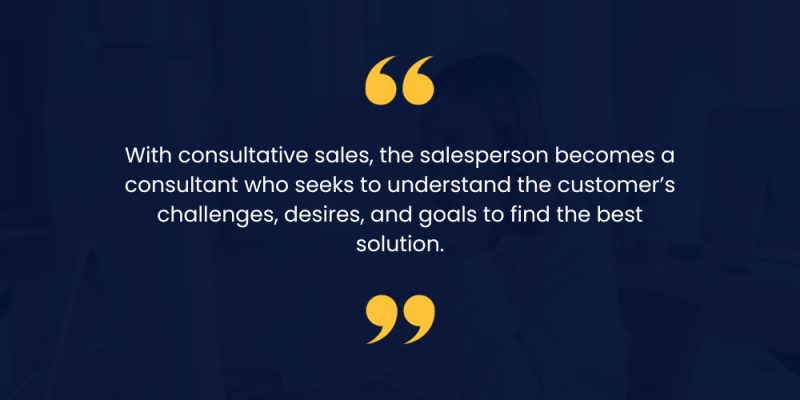
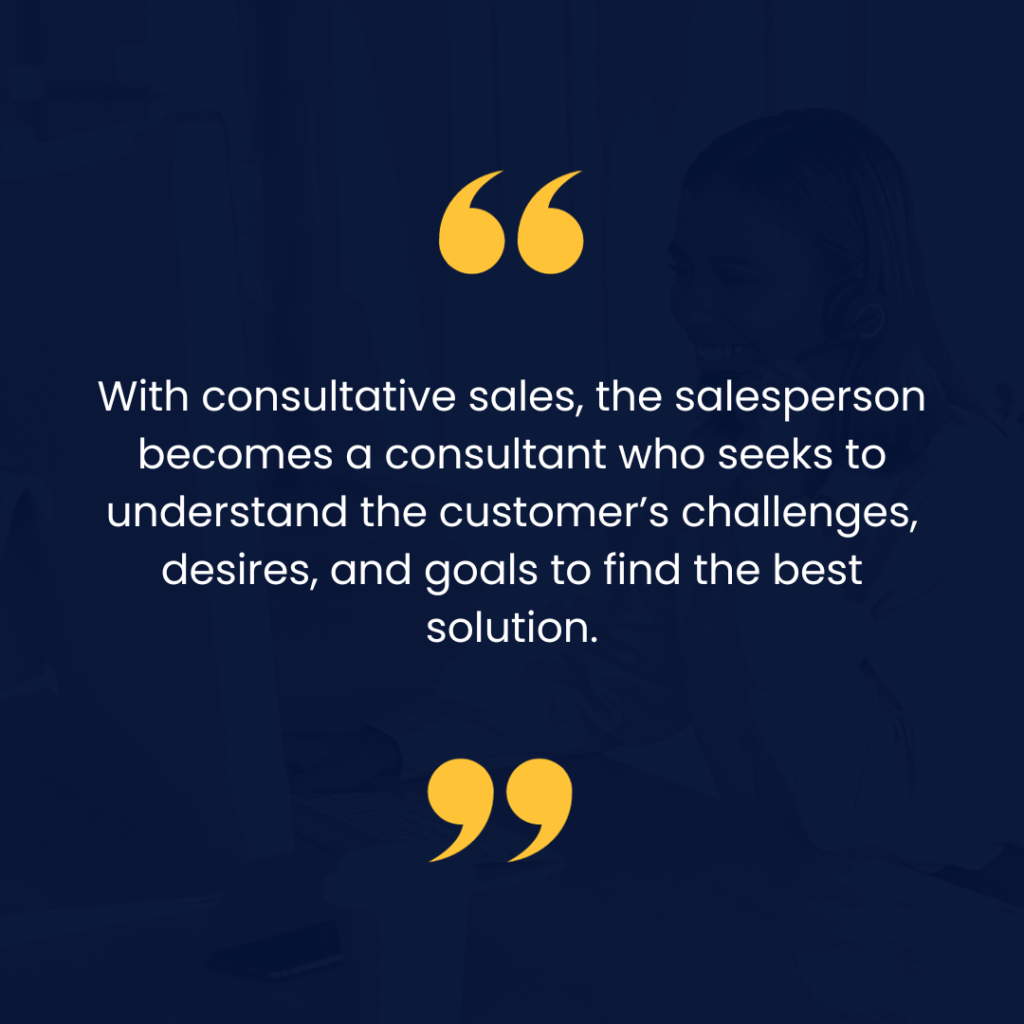
The Psychology of Consultative Sales
According to Harvard professor Gerald Zaltman, 95% of purchasing decisions are subconscious.
That means they’re driven by emotional feelings instead of logic.
Remember this the next time you wonder why certain salespeople seem to magnetize customers.
It’s not just charm or charisma. It’s their ability to tap into the core of human psychology.
The consultative sales process works in the same way.
When you express genuine empathy and understanding of a customer’s problem, they feel a sense of connection.
And when they feel connected to you, the more they’ll trust you and your offer.
The Problem with a Broken Sales Process
You could have the best product in the world.
But if your sales approach is inconsistent or doesn’t focus on finding solutions, customers will slip through the cracks.
For example:
You’ve got a potential client who’s super interested and has the funds ready.
They go into a conversation with you and almost immediately, you present them with the price of your high-ticket offer.
Now, from their perspective, it’s not just about the money. It’s about feeling understood and valued.
If you go straight for the price without asking about their needs or concerns, they might start having doubts.
They’ll ask questions like “Do they really get what I want?” or “Can I trust them?”
They’re not necessarily evaluating if they want your service but more if they want to invest in it over other offers.
This juggling can lead to decision paralysis. And if your sales approach doesn’t offer guidance, that customer might choose to look elsewhere.
A consultative approach fixes this crack in your sales process. You build trust and set clear expectations before diving into your main offer.
6 Elements of the Consultative Selling Method
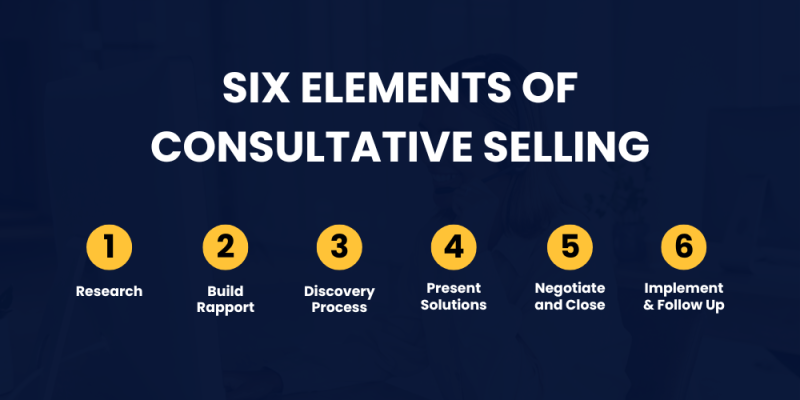
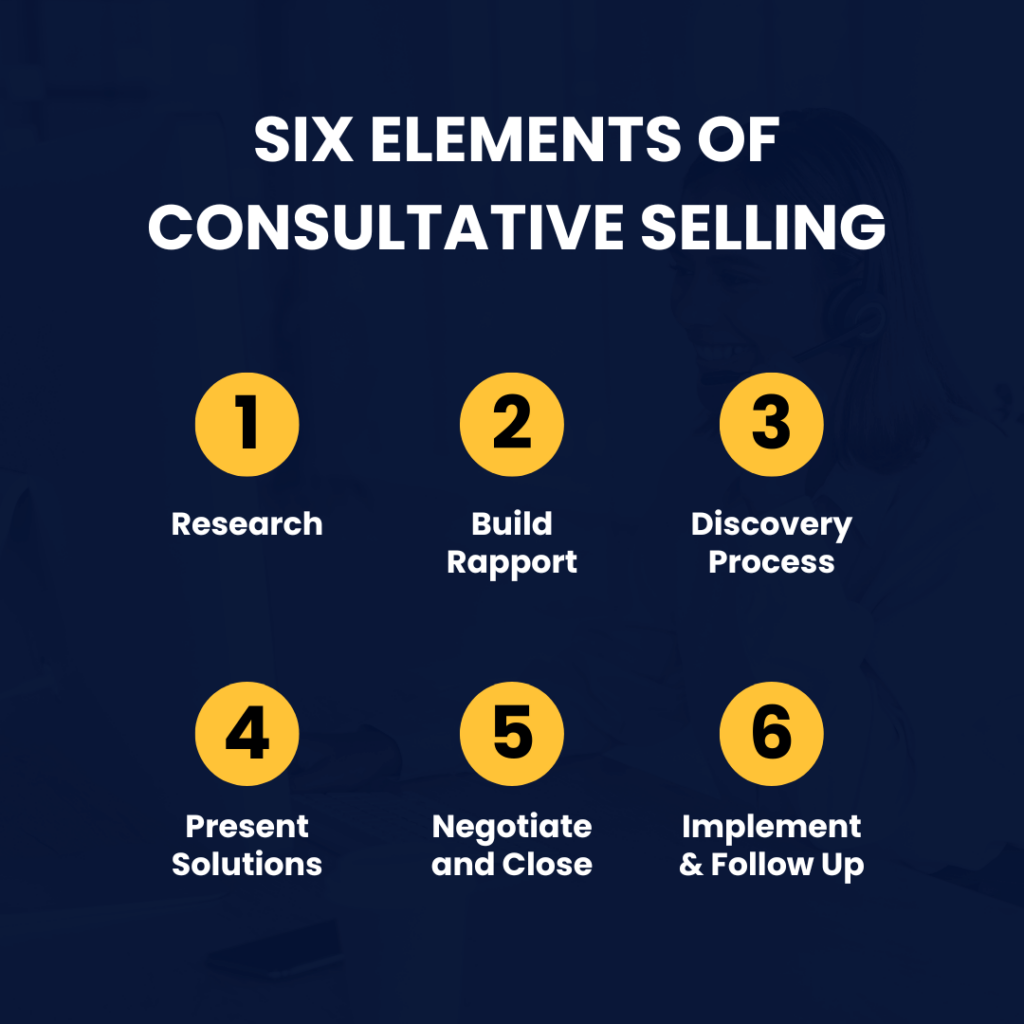
Pushing your offers aggressively no longer flies with today’s savvy consumers.
Instead, the key is to truly understand and engage with them.
These are the 6 elements of a consultative sales method that can TRANSFORM your current sales results.
Research, Research, Research
Before any interaction with a potential client, arm yourself with information.
Dive deep into your lead’s behavior, their needs, and their journey with your business. And how do you do this?
Through lead intelligence.
Familiarize yourself with their goals and any challenges they might be facing.
Data like company size, the pages they’ve explored on your site, or email interaction patterns offer a great resource for you to qualify your leads.
These aren’t just numbers or stats.
Each of these data points tells a story and reveals your prospect’s burning questions, desires, and pain points.
Tap into their needs and they’ll be more likely to work with you.
Build Rapport
First impressions are everything. And those first few minutes of interaction lay the foundation for what’s to come.
Maybe it’s engaging in small talk about a shared hobby, a comment on recent industry news, or even a mutual contact.
These minor details create a comfort zone and make the conversation flow more naturally.
And trust me: when there’s trust, there’s a higher likelihood of a sale.
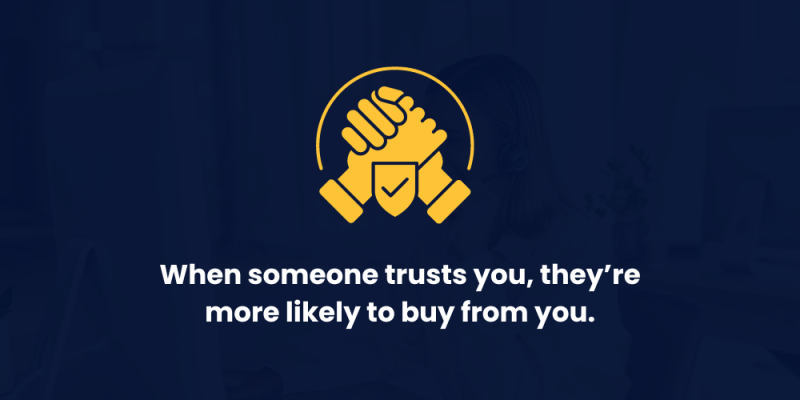
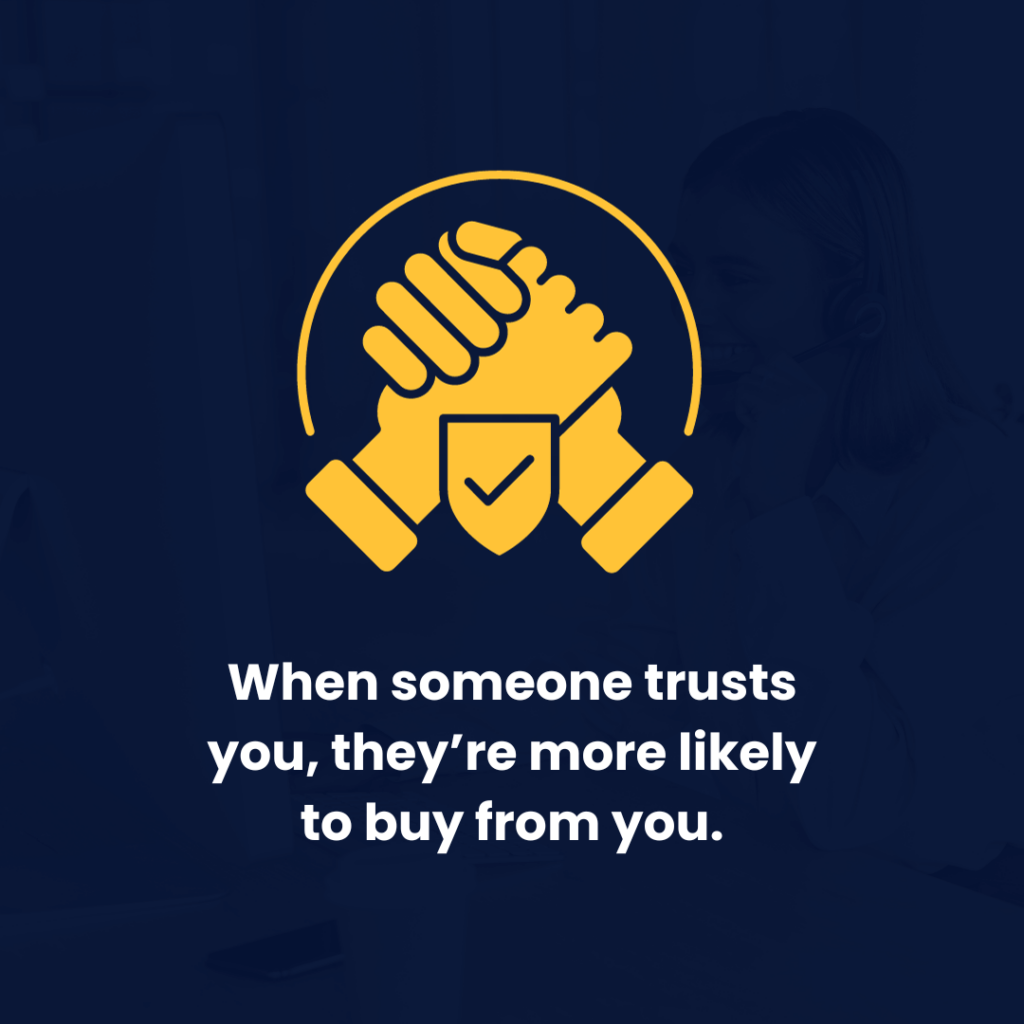
After all, people buy from people, not companies. Your potential clients need to see the human behind the pitch – someone they can relate to.
As the saying goes, “People don’t care how much you know until they know how much you care.”
Taking an extra moment to listen actively, respond with empathy, and show genuine interest can work wonders.
Discovery Process
Here’s where the rubber meets the road.
Ask open-ended questions to learn their pain points, challenges, and goals. Your goal is to uncover the real issues, not just the surface-level ones.
Use questions that start with Who, What, Where, How, Why, and When.
You might ask potential customers:
- “What’s currently your biggest challenge?”
- “How easy is your current solution to use?”
- “Who on your team is required to make your current solution work?”
Equally important is knowing the role of the person you’re talking to.
Are they an end-user who’ll be working with your product or service daily? Or are they an influencer who might recommend your solution to decision-makers?
Maybe you’re talking to the person holding the purse strings!
Present Solutions
Once you’ve got a clear idea of your customer’s needs, it’s time to demonstrate how your offer can help them.
But remember, generic pitches rarely hit the mark.
The success lies in how tailor-made your presentation feels to your prospect.
Be sure to introduce case studies or testimonials that resonate with their situation.
This applies the principle of social proof to highlight the benefits of your offer:
“People like to feel like they are part of the group. We are social creatures, after all. So, when people see that their peers are purchasing something, they will be more likely to purchase that thing as well.”
Negotiate and Close


By now, you’ve built a solid foundation. But the close is where many deals can fall flat.
So be ready to address objections and if possible, counteract them. Transparency is key here.
Your customers should understand the value and the terms of your offer.
Late-stage prospects may have last-minute queries or need clarifications. You need to respond promptly to their questions.
Even if you’re juggling multiple prospects, never give the impression that you’re too busy for them.
Especially when they’re on the brink of committing.
Implement and Follow Up
Your job isn’t done once the deal is closed.
The true measure of consultative selling’s success is in post-sale satisfaction.
Implement the promised solution and make sure the client is satisfied with it. Check in with them from time to time.
A study from Bain & Company revealed that increasing customer retention rates by just 5% can lead to an increase in profits from 25% to 95%.
So, nurture that relationship. It’s the key to long-term success and repeat business.
Example of a Consultative Sales Process
Now that you know what goes into a consultative sales cycle, let’s break it down with an example.
It’s all about making each step compelling, trust-building, and value-driven.
Let’s say you’re offering an SEO service.
Instead of overwhelming a potential client with a colossal package of services right out the gate, you present them with a smaller, digestible offer.
This is where you’ll act as a consultant. Help your prospect figure out what their SEO needs and goals are.
During your initial call, you can say something like:
“Hey [Prospect’s Name], I’d love to start with a detailed SEO audit for your website. We can also look at your competitors, see what they’re up to, and then strategize from there. This will give you a clear roadmap to improve your online visibility.”
This lets the prospect sample your skills and knowledge. It builds trust by demonstrating value upfront.
And crucially, it doesn’t give away the farm. There’s a fee, but it’s a reasonable one. It’s a taste test after all.
After experiencing this initial phase, your prospect might react in a few different ways:
- They may think, “Great, now that I have the roadmap, I’ll take it from here.”
- Or they might realize, “This is more intricate than I anticipated. Maybe another team could execute this strategy for me.”
But with your expertise shining through every phase, the most probable reaction will be: “This was invaluable! Can we discuss rolling out the entire strategy together?”
Case Study: Rocio Arroyave-Egipciaco’s Launch Consulting for Coaches
Rocio Arroyave-Egipciaco offers a comprehensive package that tackles every aspect of launching a CHALLENGE for coaches.
This isn’t a half-hearted approach.
Rocio delves deep, from designing the funnel to crafting email campaigns, editing videos, and even creating slide decks.
It’s a 360-degree service that covers the entire spectrum from A to Z. She charges $15,000 for the entire thing.
It’s a STEAL if you ask me. But she still faces price resistance. $15,000 is no small amount to shell out for a potential customer.
Currently, here’s how her sales cycle works:
- $2,000 deposit to start
- Phase #1: $2,000
- Phase #1 Complete: $3,000
- Phase #2: $5,000
- Phase #3: $5,000
This might be an odd way to price her offers BUT it works for her. Let’s play with this and turn it into a HIGHER converting consultative sales process.
Call #1: Sell a $300 PLAN
If you apply the consultative sales approach to Rocio’s current sales process, the focus is more on the client’s comfort and breaking down the sales process into digestible bits.
Instead of introducing the entire $15,000 package upfront, Rocio could propose a $300 plan during the initial call.
This strategic decision serves 2 purposes:
- It offers clients a taste of Rocio’s services. They experience her expertise without feeling overwhelmed by the commitment.
- This model provides immediate gratification to clients who are eager to move forward but are hesitant to dive in head-first.
Rocio assures her clients by saying:
“Mr. Client, I’ll craft a presentation for you, showcasing how the challenge will work, its potential impact, and the potential revenue streams.”
This approach focuses on value over price so clients see the bigger picture rather than getting caught up in the cost.
Call #2: Build an IMPRESSIVE Plan
Having provided a teaser with the $300 plan, the second call is where Rocio brings in the big guns.
She presents a detailed and compelling plan that demonstrates the value and potential ROI of her services.
By this stage, clients have seen a glimpse of Rocio’s expertise, her commitment to deadlines, and the quality of her work.
This naturally builds TRUST.
With trust established, Rocio then introduces her full $15,000 package.
The brilliance of this approach is that clients have already seen what Rocio brings to the table.
They are no longer buying blindly but are investing in a service they’ve already sampled.
Turn Your Sales Cycle into a Consultative Process
Mastering consultative selling isn’t about throwing around fancy sales lingo or having the slickest pitch.
It’s all about truly getting what your customer’s after. And showing them you’ve got the perfect solution.
So, don’t just sell. Connect, understand, and provide genuine solutions.
Your customers won’t just appreciate your offer. They’ll see it as a MUST.
Ready to level up your sales game with like-minded entrepreneurs? Join our FREE Facebook group.
Inside I share exclusive tips and trips for scaling your business in a BIG way.
See you on the inside!
